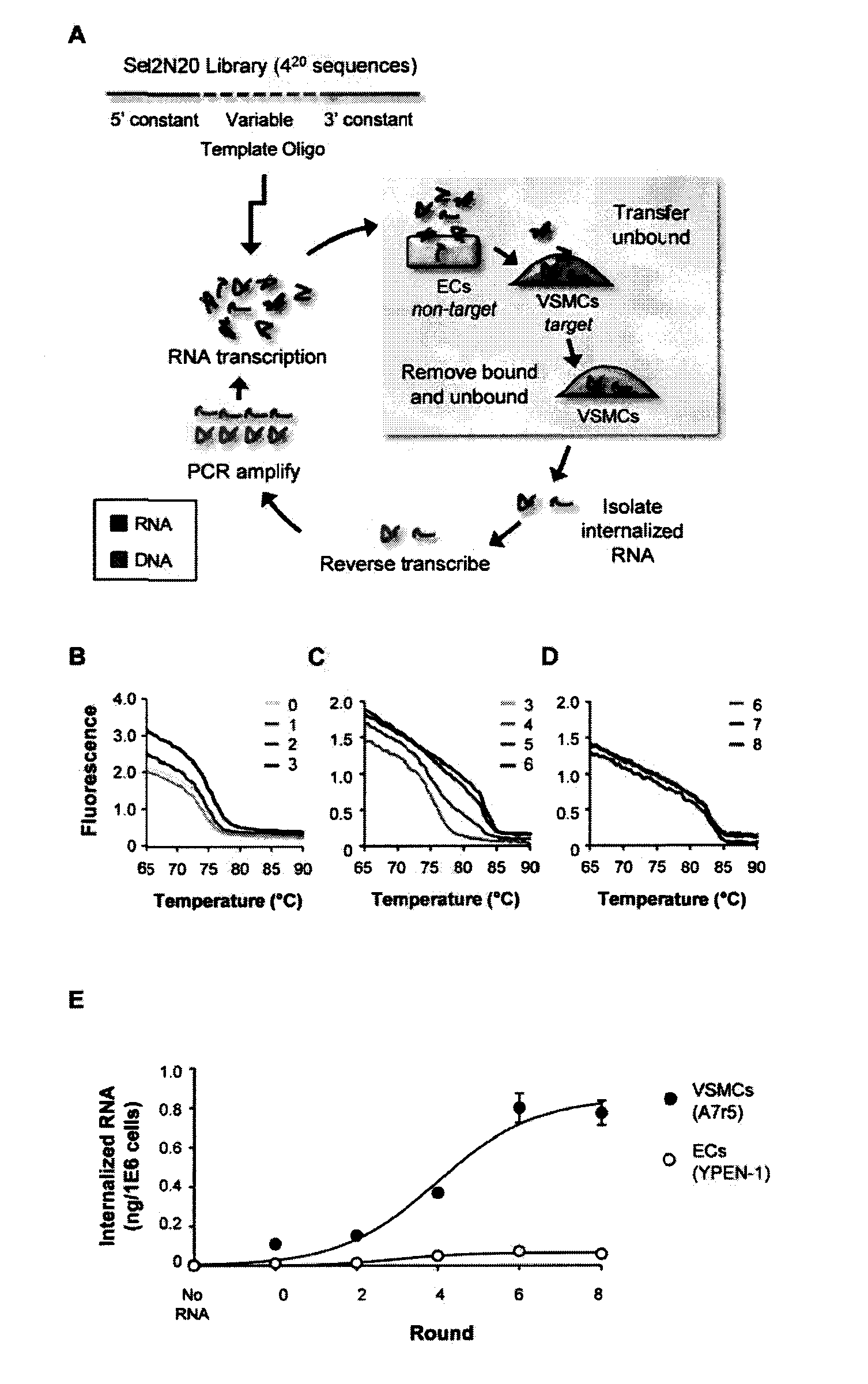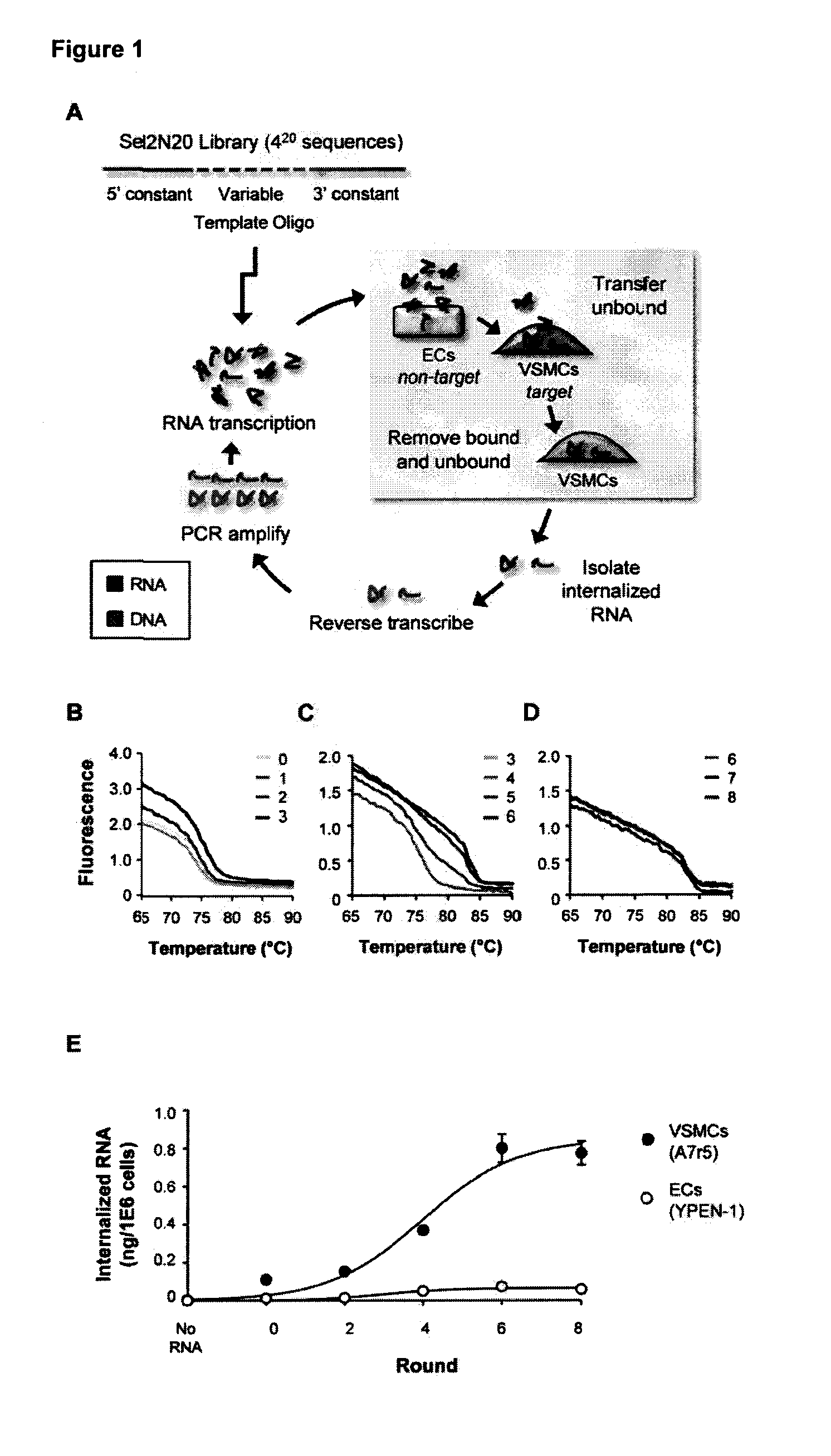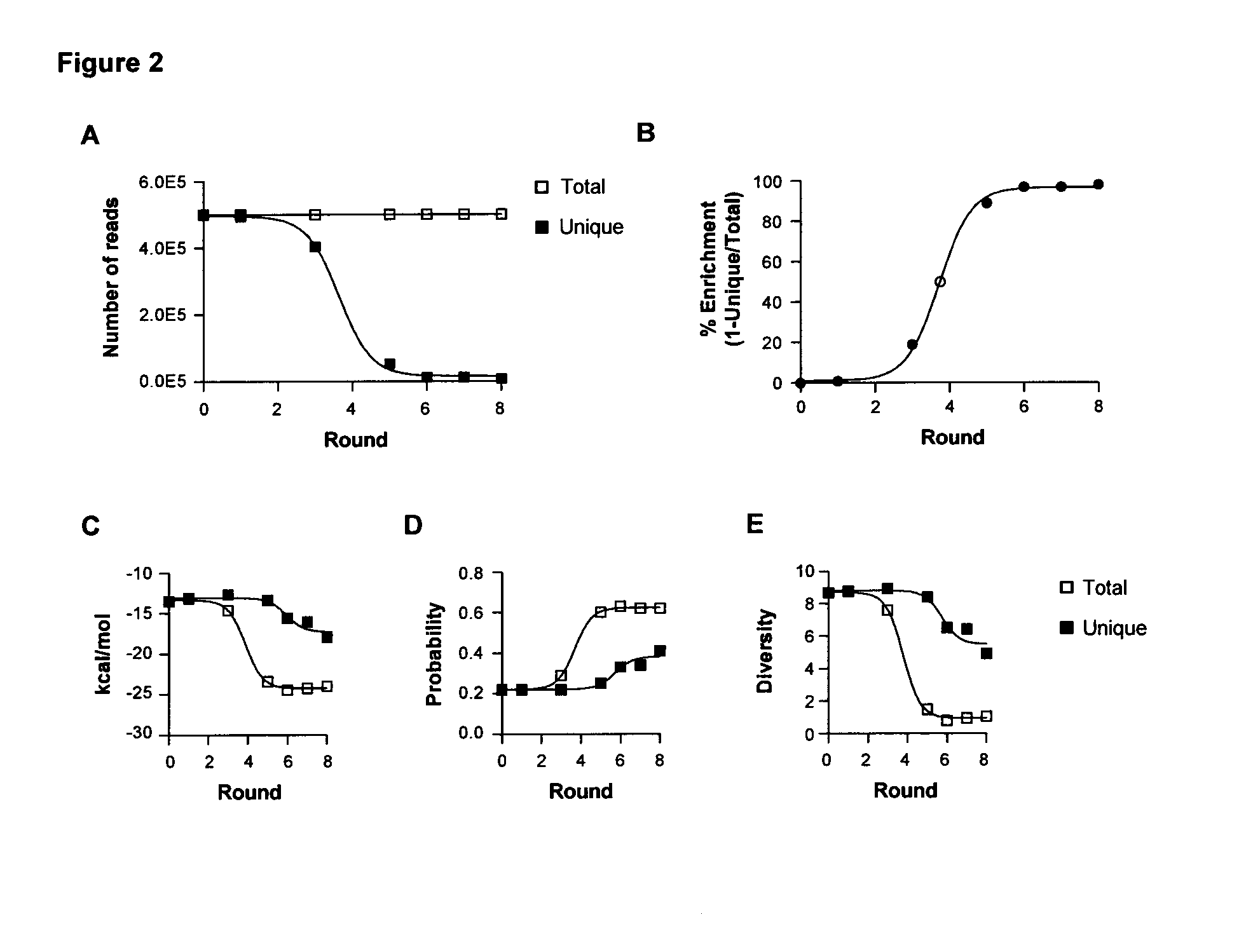Nucleic acid aptamers
- Summary
- Abstract
- Description
- Claims
- Application Information
AI Technical Summary
Benefits of technology
Problems solved by technology
Method used
Image
Examples
example 1
Rapid Identification of Cell-Specific, Internalizing RNA Aptamers with Bioinformatics Analysis of a Cell-Based Aptamer Selection
[0184]Nucleic acid aptamers represent an emerging class of pharmaceuticals under development for diagnostic and therapeutic use. Some properties of aptamers that make them promising therapeutic reagents include the intermediate size of aptamers, ease of development, and absence of synthesis constraints associated with small molecule inhibitors and protein-based drugs (e.g., antibodies). Aptamers routinely achieve binding affinities and specificities comparable to therapeutic antibodies. In addition, due to their amenability to modification by medicinal chemistry, aptamers avoid the immunogenicity concerns of protein-based drugs and can be engineered to have optimized pharmacokinetic (PK) and pharmacodynamic (PD) profiles for in vivo applications (1,2). Furthermore, aptamers can be generated to a range of therapeutic targets more efficiently than is the case...
example 2
[0319]It has now been shown that the aptamers selected on VSMCs in culture bind to rat and human vessel segments ex-vivo (FIGS. 14, 15 and 17). Several of the aptamers (01, 14 and 51) bind to denuded vessels (exposed smc layer) ex vivo (FIG. 16). Other figures show evaluating the functional effects of several of these aptamers on migration and proliferation of VSMCs (FIGS. 13, 18, 19). Effects of aptamer 14 and 01 were seen on inhibiting VSMC migration but not proliferation. These experiments were carried out in the present of two agonists (PDGF and TNFalpha) showing that the aptamers can inhibit multiple agonists and are probably affecting pathways downstream of the target receptor.
[0320]It was shown that aptamers are specific for vascular smooth muscle over muscle types (FIG. 20). Aptamers (150 nM) were incubated with tissue segments ex vivo for 30 min and recovered RNA measured by RT-qPCR. Data were normalized to tissue mass and expressed relative to denuded aorta.
[0321]The cross...
PUM
| Property | Measurement | Unit |
|---|---|---|
| Angle | aaaaa | aaaaa |
| Length | aaaaa | aaaaa |
| Size | aaaaa | aaaaa |
Abstract
Description
Claims
Application Information
 Login to View More
Login to View More - R&D
- Intellectual Property
- Life Sciences
- Materials
- Tech Scout
- Unparalleled Data Quality
- Higher Quality Content
- 60% Fewer Hallucinations
Browse by: Latest US Patents, China's latest patents, Technical Efficacy Thesaurus, Application Domain, Technology Topic, Popular Technical Reports.
© 2025 PatSnap. All rights reserved.Legal|Privacy policy|Modern Slavery Act Transparency Statement|Sitemap|About US| Contact US: help@patsnap.com



